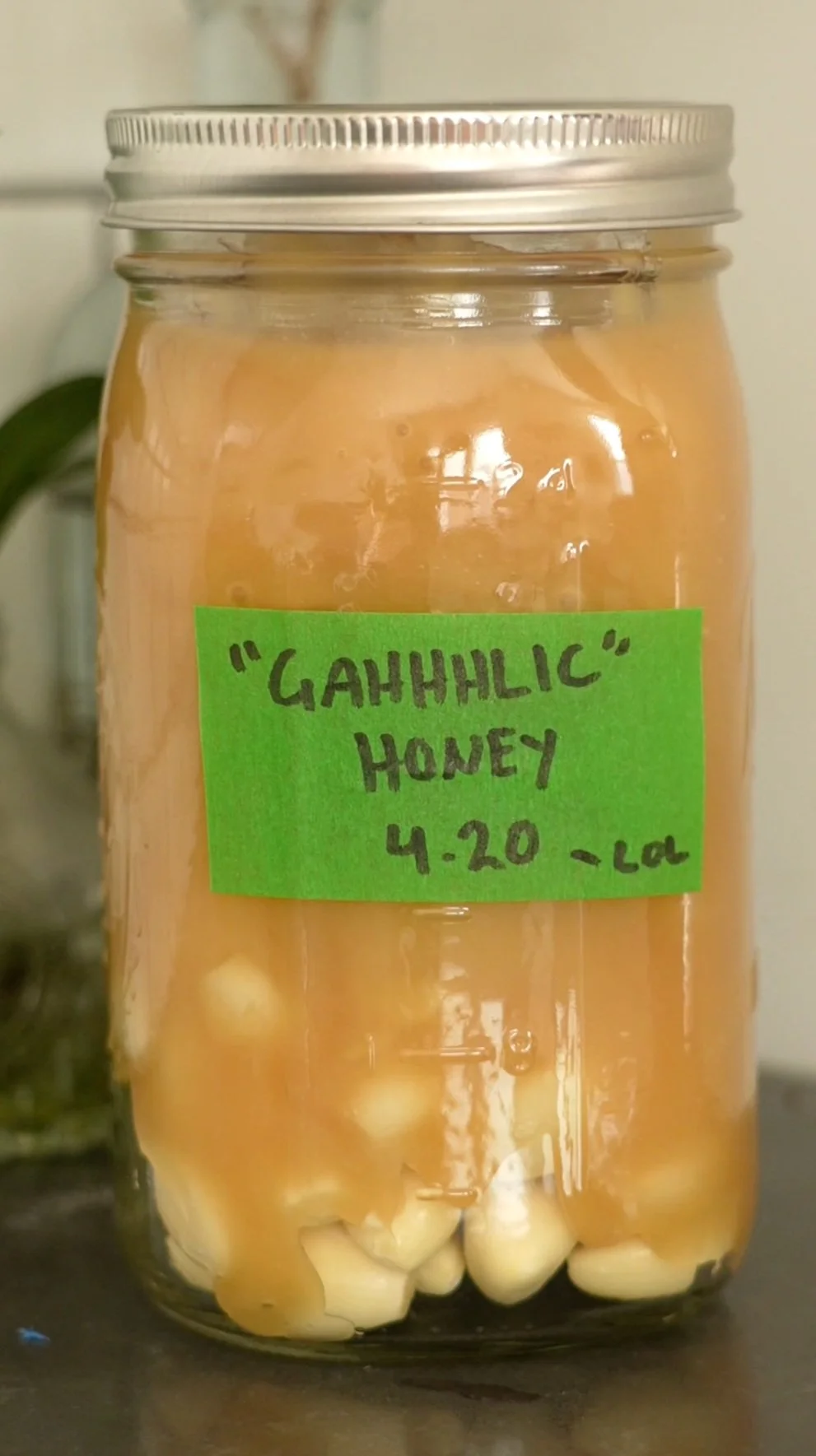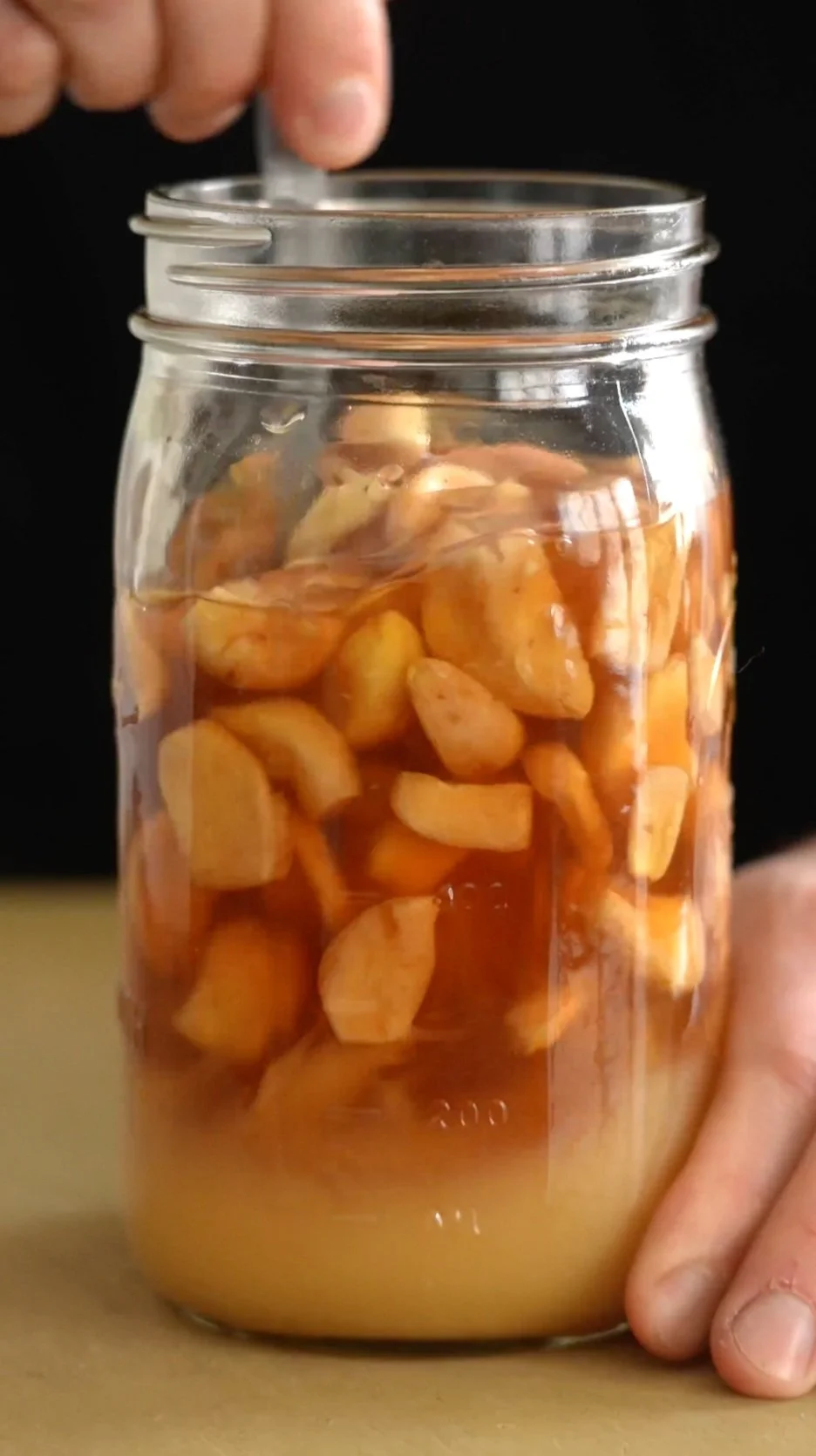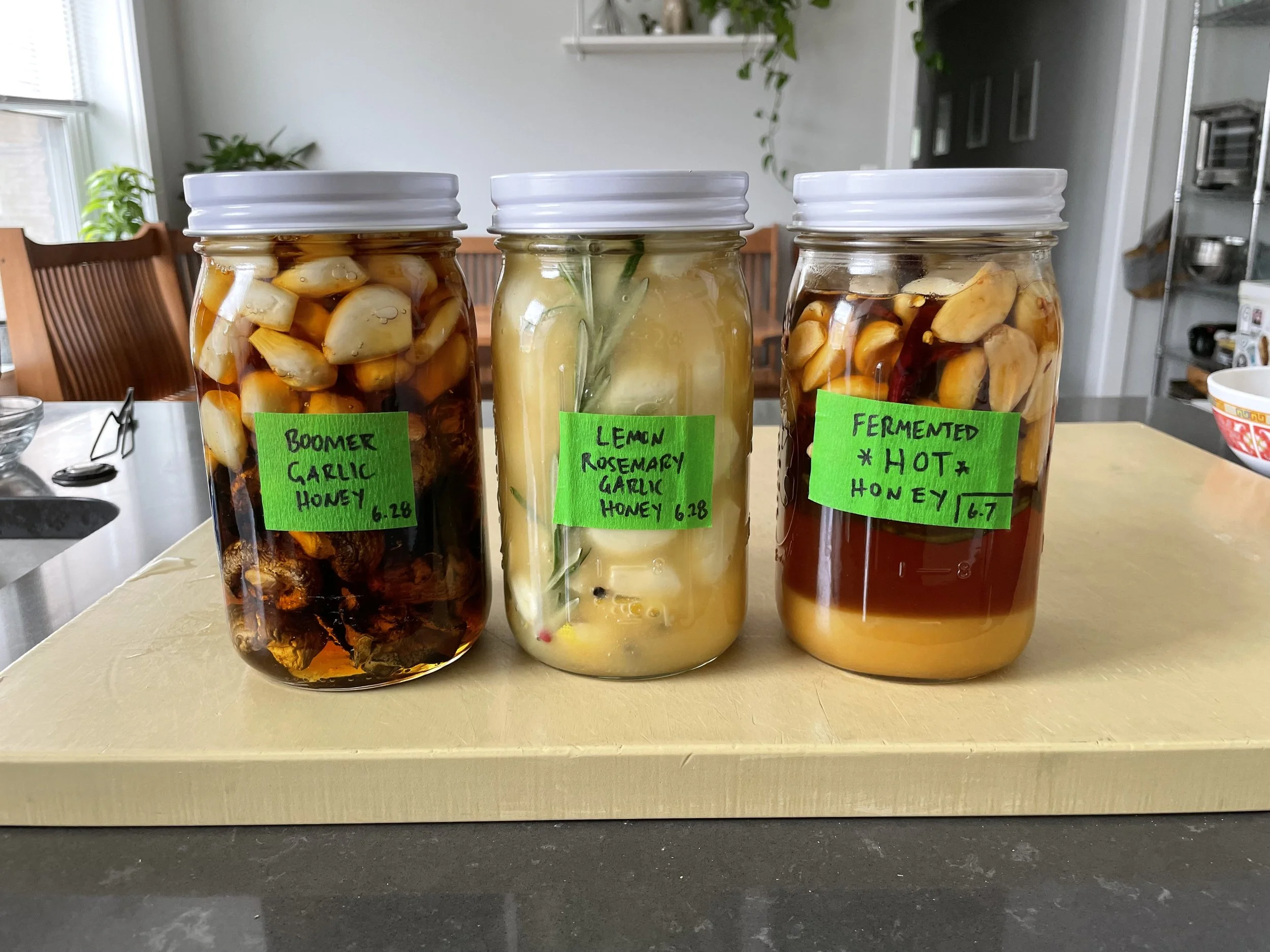Fermented Garlic Honey
Garlic honey is a simple yet potent concoction made by infusing raw garlic cloves in raw honey, often used as a culinary ingredient and natural remedy. It has a unique combination of the savory, pungent flavor of garlic and the sweet richness of honey, making it versatile in its culinary uses. You can use it as a glaze for meats and vegetables, a flavorful addition to dressings, marinades, or sauces, or even a topping on pizza or toast. From a health perspective, garlic honey combines the antimicrobial and antioxidant properties of both garlic and honey. Garlic is known for its immune-boosting properties, beneficial for cardiovascular health and loaded with vitamins and minerals. Meanwhile, honey is renowned for its soothing effect on sore throats, antioxidant properties, and ability to aid in digestion. Garlic honey serves as a powerful and flavorful addition to both your kitchen and natural medicine cabinet.
P.S. Get creative! Garlic and honey are the only ingredients. Add other aromatics/ingredients to change the flavor profile and make it your own (see below).
Full video here. 🤘🏼 Adam
Day 1 of Fermentation (Left). Day 30 of Fermentation (Right)
3 Mushroom (Left). Lemon Rosemary (Center). Toasted Chili (Right).

Fermented Garlic Honey
Ingredients
Instructions
- Add the garlic to a clean, sealable jar then pour the honey on top. Cover the jar loosely with a lid and store in a cool, dark place. Stir and "burp" the air from the container the honey every week for 4 days for 1 month.
- Once the honey is thin and fragrant, use it.
A note on Botulism...
Botulism is a serious form of food poisoning caused by the bacterium Clostridium botulinum. This bacterium thrives in environments that are low in oxygen, have a pH higher than 4.6 (meaning they are more neutral or alkaline), and are at room temperature or warmer.
Honey, particularly raw honey, can sometimes contain botulism spores, which is why it's not recommended for children under 1 year old. Garlic can also harbor the bacteria, especially if it's been improperly stored. Combining garlic and honey, therefore, might theoretically provide an environment conducive to the growth of botulism if not properly acidified.
One way to ensure safety when making garlic honey is to acidify the honey to a pH level lower than 4.6, creating an environment in which Clostridium botulinum cannot produce the toxins that cause botulism.
Here's how you could test your garlic honey with pH strips:
Cop some pH strips. These can be grabbed from scientific supply stores or online.
Immerse the pH strip into the garlic honey, following the manufacturer's instructions for the pH strips.
Compare the color change of the pH strip to the provided chart that comes with the strips. The number that matches the color on the strip is the pH of your garlic honey.
If the pH is 4.6 or higher, it means your garlic honey is not acidic enough to prevent the potential growth of Clostridium botulinum. In this case, you would need to acidify your garlic honey by adding a food-grade acid, such as vinegar or lemon juice, until the pH is less than 4.6. You should test the pH after each addition of acid until the desired pH level is reached.
Remember, while pH is an important factor in preventing the growth of Clostridium botulinum, proper food handling and storage practices are also critical to preventing foodborne illnesses.
Please note that while home testing can be an additional safety measure, it does not replace the importance of proper food storage and preparation. If you have any doubts, always err on the side of caution and consult a food safety professional. 🤘🏼 Adam
Disclaimer: I earn commission income with qualifying purchases made through Amazon’s Affiliate program and other affiliate links in this description.








